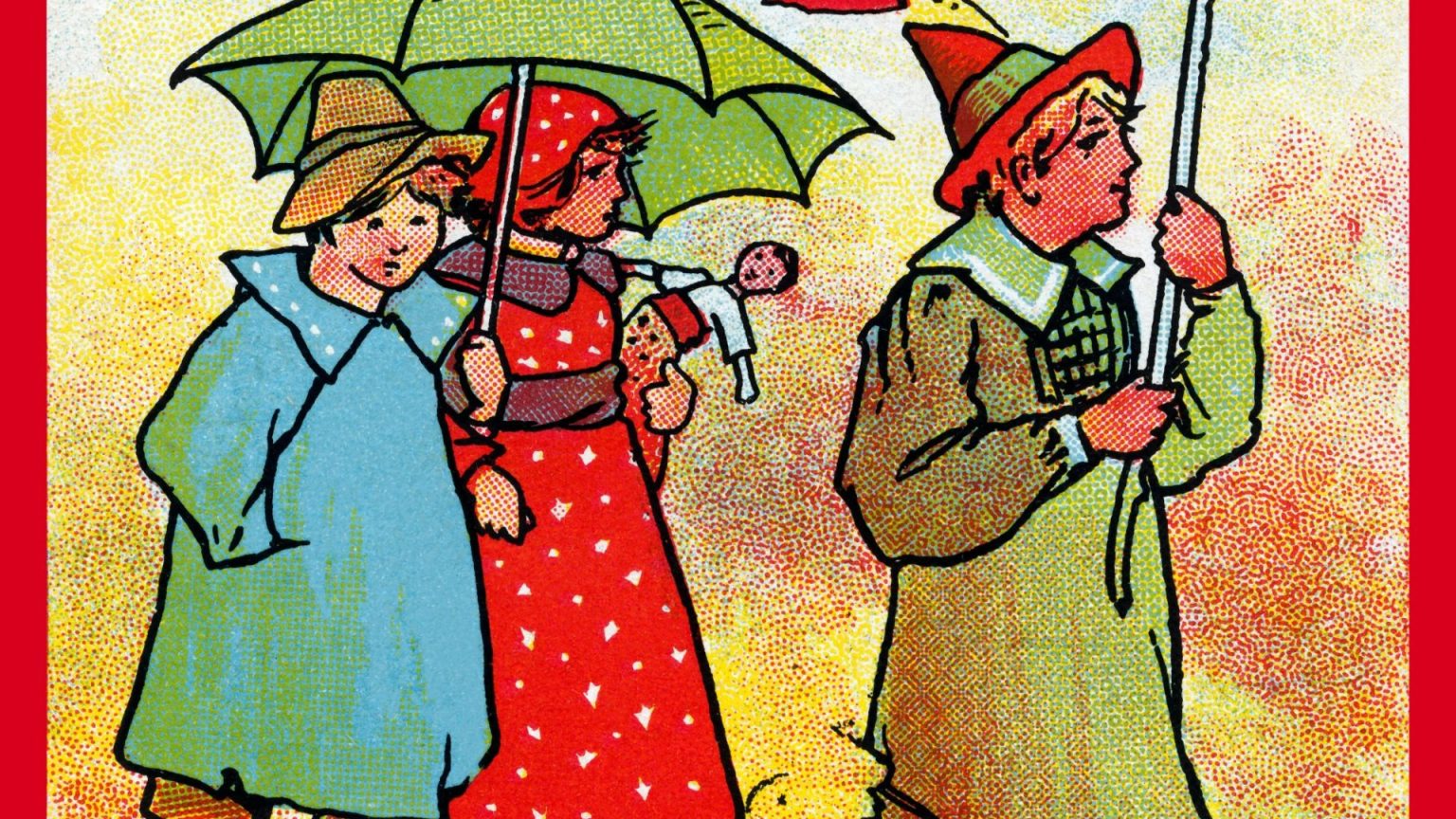The Enigmatic Umbrella and the Hidden Face: A Test of Visual Acuity and Cognitive Prowess
Optical illusions, those captivating visual tricks that challenge our perception, have long fascinated and intrigued us. They present a seemingly simple image, yet conceal within them hidden elements that only the most observant can discern. Such is the case with the "umbrella illusion," where a multitude of characters stroll beneath their rain-repelling canopies, but a clandestine face lurks within the scene, eluding the casual observer. This visual puzzle serves as a testament to the power of observation and the intricacies of human perception.
The challenge presented by this illusion is not merely to see, but to truly observe. It demands a keen eye for detail, an ability to distinguish subtle patterns amidst a visually cluttered background. For those who possess such visual acuity, the hidden face will emerge from the visual tapestry, a testament to their perceptive abilities. But for others, the image may remain a simple scene of umbrella-clad individuals, the hidden face forever concealed within the visual noise.
This visual puzzle, however, is not merely a test of eyesight; it also engages our cognitive faculties. It requires us to analyze the image, to dissect it into its constituent parts, and to search for patterns and anomalies. This process of active observation stimulates our brains, enhancing our cognitive skills and improving our ability to focus and concentrate.
The Benefits of Brain Teasers and Optical Illusions: Sharpening the Mind and Boosting Cognitive Function
Brain teasers and optical illusions are more than just amusing diversions; they offer a multitude of benefits for our cognitive health. These mental exercises stimulate various regions of the brain, promoting mental agility, enhancing problem-solving skills, and improving memory function. They encourage us to think outside the box, fostering creativity and innovative thought processes. Furthermore, the focused attention required to solve these puzzles enhances our concentration and attention span.
Beyond the cognitive benefits, engaging with optical illusions and brain teasers can also provide stress relief. The act of focusing on a challenging puzzle can be a form of mental escape, allowing us to momentarily detach from the stresses of daily life. The sense of accomplishment derived from successfully solving a puzzle can boost our mood and provide a sense of satisfaction.
The Umbrella Illusion: Unmasking the Hidden Face and its Cognitive Implications
Returning to the umbrella illusion, the hidden face serves as a metaphor for the hidden complexities of the world around us. It reminds us that there is often more than meets the eye, and that true understanding requires careful observation and critical thinking. The ability to discern the hidden face within the image is not merely a matter of visual acuity; it is also a reflection of our cognitive abilities, our attention to detail, and our ability to think critically.
The act of searching for the hidden face engages multiple cognitive processes, including visual perception, pattern recognition, and spatial reasoning. It requires us to analyze the image, to compare and contrast different elements, and to draw inferences based on the available information. This process of active engagement strengthens our cognitive abilities, improving our ability to solve problems, make decisions, and think creatively.
The Solution Revealed: Uncovering the Hidden Visage within the Umbrella Scene
For those who have struggled to locate the hidden face within the umbrella scene, a hint may be in order: focus on the central portion of the image. Look closely at the arrangement of the umbrellas and the spaces between them. With a little patience and persistence, the hidden face should gradually emerge from the visual clutter.
The revelation of the hidden face provides a sense of satisfaction and accomplishment, a testament to the power of observation and the ability to discern patterns amidst complexity. It serves as a reminder that even in the seemingly mundane, there are hidden wonders waiting to be discovered by those who possess the keen eye and the inquisitive mind.
Beyond the Umbrella: Exploring Other Optical Illusions and Their Cognitive Benefits
The world of optical illusions is vast and varied, offering a multitude of puzzles and challenges to test our visual acuity and cognitive skills. From identifying hidden objects in complex scenes to deciphering ambiguous figures, these illusions provide a stimulating and engaging way to exercise our minds.
Other examples of optical illusions include finding a hidden bird in a cloudy sky, spotting the differences between two seemingly identical images, or locating a camouflaged crab in a bush. Each of these puzzles presents a unique challenge, requiring different cognitive skills and strategies to solve. Engaging with these illusions regularly can help to sharpen our minds, improve our concentration, and enhance our problem-solving abilities.
The Power of Observation: Unlocking the Secrets of the Visual World
The umbrella illusion, and other optical puzzles like it, serve as a reminder of the power of observation. They challenge us to look beyond the surface, to delve deeper into the visual world and uncover the hidden patterns and complexities that lie beneath. By engaging with these illusions, we not only sharpen our minds but also cultivate a greater appreciation for the intricacies of human perception and the wonders of the visual world.











